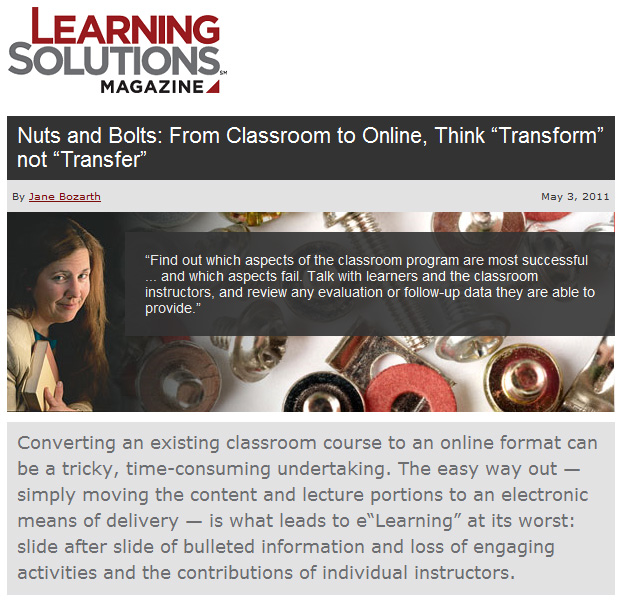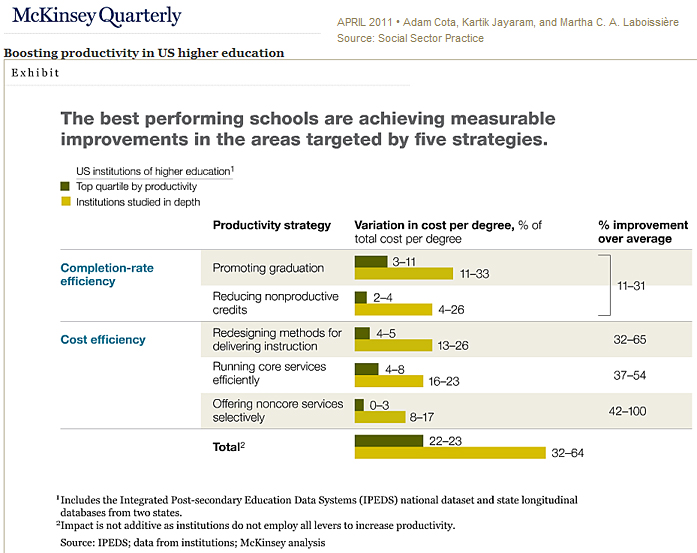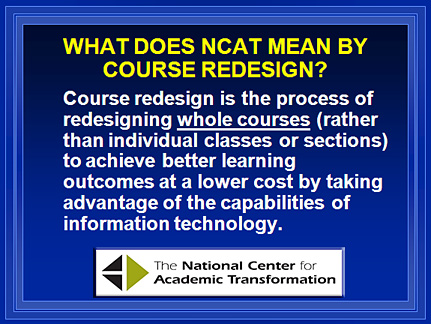1. Analyze the current state of the classroom program.
2. Update and cut-and-chunk material.
3. Identify ways of adding interactivity and capturing the richness of the “live” event.
Boosting productivity in US higher education — from McKinsey Quarterly by Cota, Jayaram, Laboissière
Excerpt:
The United States needs more college graduates. Opinions vary on exactly how many, but McKinsey estimates that the nation will need an additional one million each year by 2020 to sustain its economic health. That would mean increasing today’s annual total—2.5 million—by 40 percent.
To meet this goal, universities and colleges would have to increase their output of graduates by 3.5 percent a year over the next decade. That’s a daunting task for two reasons. First, it would cost an additional $52 billion a year, based on 2008 costs to produce a graduate. Yet many states, plagued by fiscal woes, have recently lowered spending on higher education, a trend that’s unlikely to be reversed. Second, to achieve this increase, colleges would need to enroll many more than 3.5 percent more freshmen each year, because today, on average, only 40 percent of students who enroll go on to graduate.
e-learning outlook for 2011 — from Tony Bates
Tony discusses course redesigns, mobility, open educational resources (OER), multimedia, learning analytics, and shared services.
The Learning MarketSpace, April 2010
A quarterly electronic newsletter of the National Center for Academic Transformation highlighting ongoing examples of redesigned learning environments using technology and examining issues related to their development and implementation.
THE REDESIGN ALLIANCE
AGENDA FOR THE FOURTH ANNUAL CONFERENCE
ORLANDO, FLORIDA | March 28 – 30, 2010
The Virtual University — by Anya Kamenetz | April 20, 2010 — my thanks to Mr. Jeff Wiggerman at Davenport University for this resource
Why cash-strapped colleges need to stop worrying and learn to love the online classroom.
“At this point, however, the hybrid, NCAT-style course-redesign models seem most compelling. Not only do they show some of the best learning results, but they’re in keeping with the multifaceted history of the university, and they offer the reassurance of familiarity — a scaffolding, if you will, for the transition to new modes of teaching.”
The Fourth Annual Redesign Alliance Conference will bring together faculty, administrators and staff from institutions and companies who have been engaged in large-scale course redesign and will create a place where new colleagues can learn about the benefits of course redesign and how to implement course redesign on their home campuses. The meeting is open to the higher education community—please join us!
When: March 28 – 30, 2010
Where: The Rosen Centre Hotel, 9840 International Drive, Orlando, Florida 32819
Agenda












